Our study shows that employees who regularly provide meaningful feedback are also the top contributors and high performers.
Feedback and Employee Engagement
During turbulent times organizations must rethink their plans and processes to move their business forward. Many must resize, or reorganize, to minimize costs and maximize agility. And retaining top performers is the highest priority. McKinsey & Co finds that top talent is eight times more productive than the average performer. More so, we know them to be better problem solvers, more dedicated, and able to guide a business through transformational changes.
How do we identify our standout performers today?
The reality is that we use what we see to make decisions. Talent who is better at creating visibility is much more likely to get identified and promoted. And those who provide significant contributions but do not make an effort to get noticed remain in the shadows. A Forbes article suggests the following processes to improve talent identification:
1. Trust the science
2. Get good data
3. Focus on leadership
4. Focus on personality
5. Use the right tools
6. Adopt early
At Happily.ai, we’ve applied relational analytics from recognition and feedback to identify and understand talent. From our study, we’ve found an undeniable relationship between regular feedback givers and those recognized as top performers by their peers and managers.
Study & Results
Our hypothesis: Employees who regularly provide meaningful feedback are more likely to be top performers.
We conducted a study across three companies with a total of 551 employees. Recognition data helps determine a person’s contribution to the organization and its people. Peer-to-peer recognition provides a measure of Network Effectiveness — how much a person contributes to the people around them. Direct manager recognition offers a measurement of Individual Performance, how much a person contributes to the organization in their assigned role as evaluated by their manager.
Four classifications, or groups, are created based on recognition characteristics:
Group 1: Low peer recognition and low recognition from direct manager
Group 2: Low peer recognition and high recognition from direct manager
Group 3: high peer recognition and low recognition from direct manager
Group 4: high peer recognition and high recognition from direct manager
Talent in Group 4, with high peer recognition and high recognition from their direct manager, is considered as top performers. They are those who excel in their individual performance as well as actively contribute to those around them.
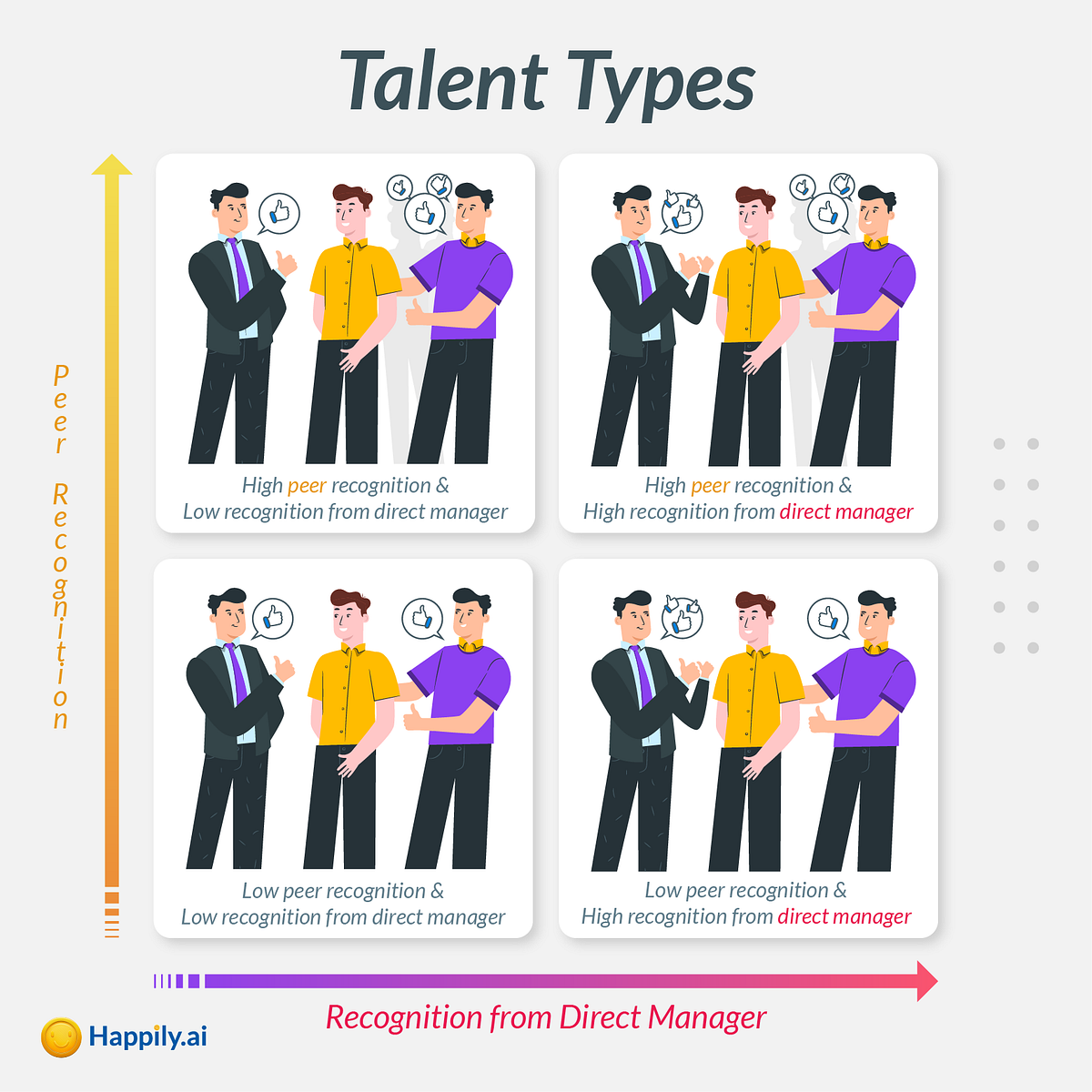
Moreover, feedback activity data provides insights into how active a person is in sharing feedback with their direct manager and the organization. Happily offers everyone the opportunity to share feedback every day (daily check-ins) voluntarily. Whatsmore, we study meaningful feedback, feedback that is detailed, thorough, and is a byproduct of meaningful effort.
The charts below indicate the percent of participants in each talent group who:
- Provide meaningful feedback regularly (more than or equal to four times a month)
- Irregularly provide meaningful feedback (more than zero, but less than four times a month)
- Never give any meaningful feedback.
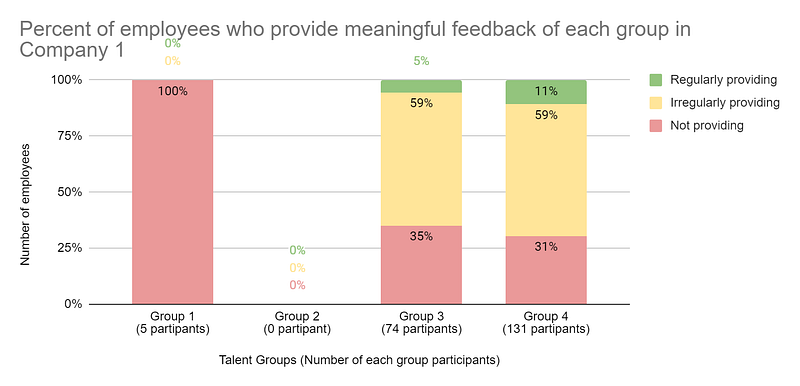
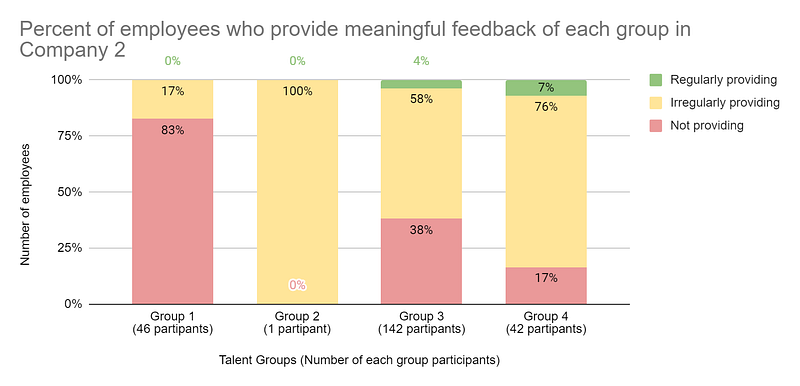
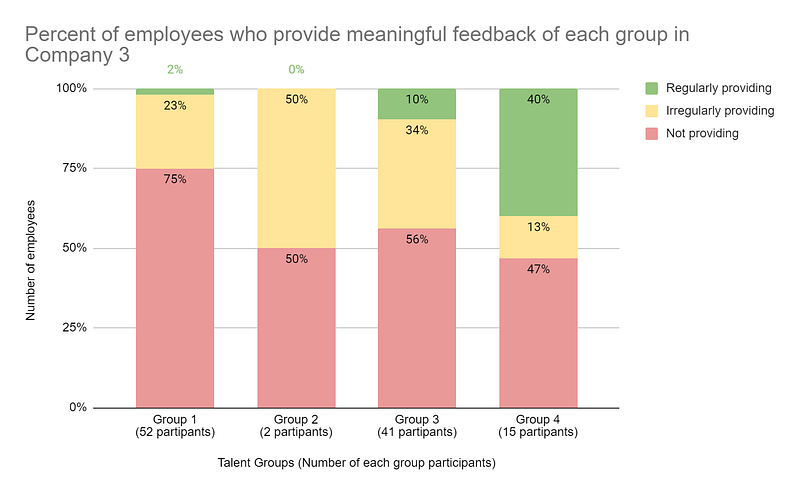
Our findings show that participants in Group 4, the top performers, are up to 20 times more likely to share regular, meaningful feedback than those in Group 1. Participants in Group 1, those who do not receive recognition from their peers or manager, rarely participate in regular, meaningful feedback.
Talent who provides meaningful feedback is in Groups 3 and 4. These two groups represent talent with high peer recognition, suggesting that employees who receive recognition are more likely to contribute meaningful feedback. Our findings align with Public Recognition Is A Greater Driver Of Psychological Safety by Rob Peters. Peer recognition fortifies organizational culture by building relationship capital, reinforcing commitment and engagement. And when employees feel comfortable and valued, they contribute meaningfully.
How to create an environment that supports your talent
The relationship between top performers and those who provide regular, meaningful feedback is clear. Whether top talent is more engaged to provide feedback or if the opportunity to provide feedback activates talent, there is enough evidence that we need to provide the right environment for our talent to thrive. Here are six ways you can help support your people:
1) Foster psychological safety:
Whenever any problems occur, it is tempting to look for someone to blame. Psychological safety requires us to focus on the “why?” instead of the “who?” Dig into solutions with an emphasis on the collaborative language of “how?”.
2) Create professional development opportunities:
Enhance your workforce by creating a knowledge base and training programs. Opportunities to develop skills and competencies increase workplace satisfaction and employee engagement.
3) Boost engagement:
Participate in decision-making with your team and provide ample opportunities for feedback. Active and engaged talent has a better understanding of organizational goals and understand how they can contribute to overall success.
4) Be open to critical feedback:
Do not assume that your employees know how willing you are to receive critical feedback. Clearly communicate your openness and acknowledge the feedback you get.
5) Facilitate recognition:
Boost performance by sharing accomplishments and provide ways by which employees can openly share peer recognition. Ensure your managers actively recognize their top performers, focusing on effort and behavior more than just results.
6) Take care of employees’ wellness:
Be attentive to wellness in the workplace. Provide flexibility when possible, and help employees reprioritize when they’re overwhelmed.
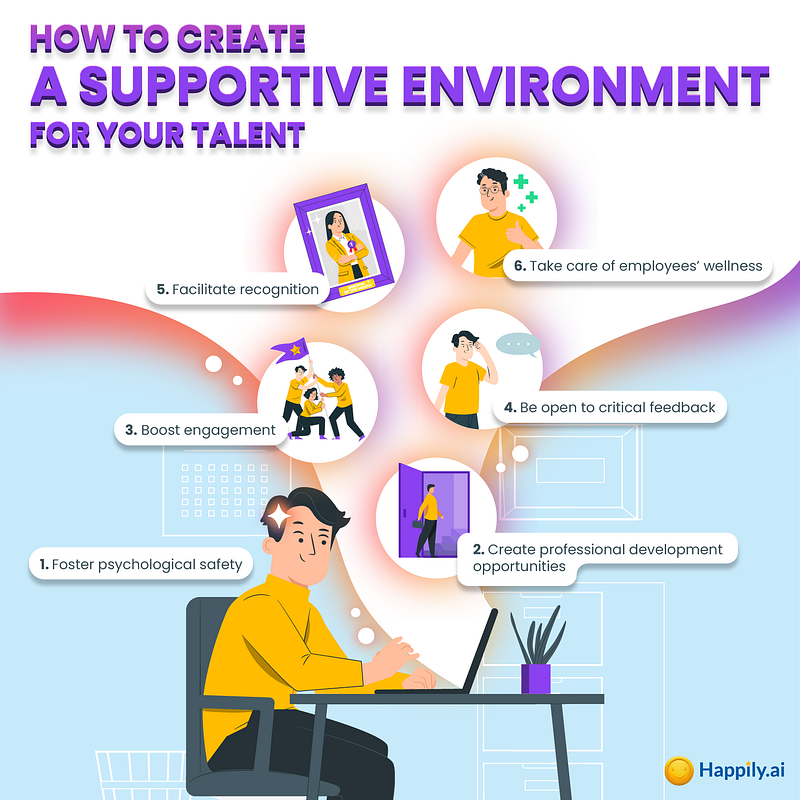
Conclusion
Good talent is scarce. Business continuity and growth depend on the ability to identify, cultivate, and retain top performers. Our findings show a relationship between active feedback and top talent, supporting the argument that feedback and recognition are critical to creating engagement and activating talent. Creating the right, supportive environment is the first step.
At Happily.ai, we help companies build a feedback and recognition culture at all levels. Our relational analytics and insights help identify top talent recognized by managers and peers. And we provide the tools for your leaders, managers, and employees to create the right environment for employee success and engagement. Visit us here to learn more!
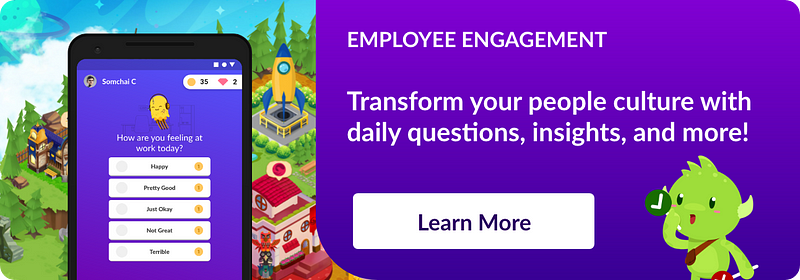
References:
[4] https://sparkbay.com/en/culture-blog/employee-retention-stategies-2
[5] Photo by Marten Newhall on Unsplash









